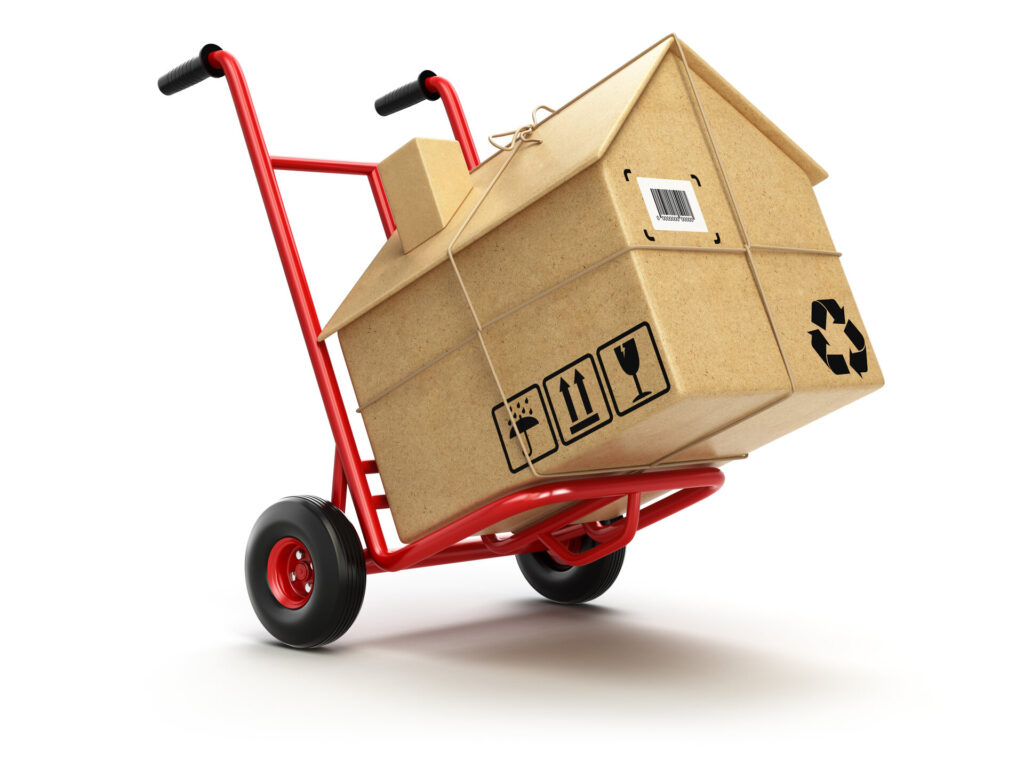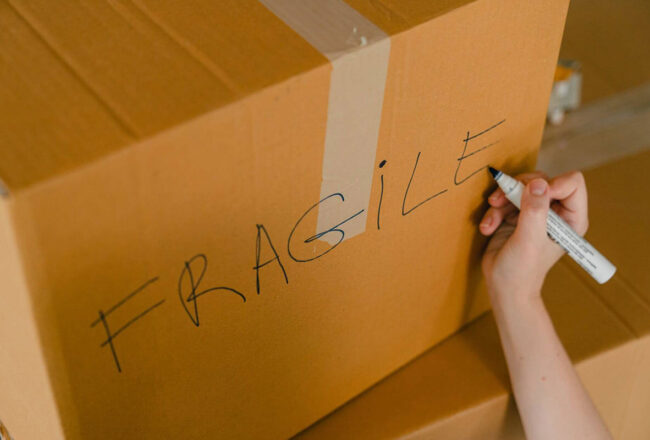Moving across the country can be an exciting adventure, but it also comes with its fair share of challenges, including the risk of injury. You need to be careful and know how to avoid injury while moving. Otherwise, the process of loading and unloading heavy boxes and furniture can take a toll on your body.
Plan Ahead When Moving Interstate
When it comes to interstate moving, it is crucial to plan ahead to ensure a smooth and stress-free transition. One of the most essential steps is creating a relocation plan in time. A relocation plan is a detailed outline of all the tasks you need to complete before and during the relocation, including packing, transportation, and unpacking afterward.
A plan helps you stay organized, reduces the risk of forgetting essential tasks, and ensures that you have enough time to complete everything before the moving day.
Planning, Planning, and More Planning
Creating a plan and a relocation checklist is especially important when moving state to state because it involves a more complex and time-consuming process than a local relocation. It requires more planning, coordination, and attention to detail. Failing to plan ahead can result in costly mistakes, unexpected delays, and added stress.
By having a plan, you can reduce the likelihood of these problems and make your relocation more manageable. When planning ahead for an interstate relocation, it’s essential to schedule enough time for rest and packing in stages.
Relocating is a physically and emotionally exhausting experience, and trying to complete everything in one day can be overwhelming. Instead, break down the process into manageable stages, and give yourself enough time to rest and recharge between them.
This will help you avoid burnout and ensure that you can complete each task to the best of your ability. Packing in stages is another essential tip for planning ahead. It’s crucial to start packing early so you have enough time to sort through your belongings, donate, sell, or get rid of items you don’t need, and pack everything properly.
How to Avoid Injury While Moving – Use Proper Lifting Techniques
Avoiding injury while relocating is essential, and one of the most effective ways to prevent injuries is by using proper lifting techniques. When lifting heavy items, it’s crucial to use your legs and not your back. This means bending at the knees, keeping your back straight, and lifting the item using the strength in your legs.
Proper lifting techniques distribute the weight of the item evenly across your body and reduce the strain on your back. Using proper lifting techniques is especially important for avoiding back injuries, which are common injuries that can occur during relocating. Back injuries can be painful and debilitating, and they can significantly slow down the relocation process. By using proper lifting techniques, you can reduce the risk of back injuries and make relocating easier and safer.
In addition to using proper lifting techniques, there are other relocation tips for lifting heavy items. Using dollies or lifting straps can make it easier to move large and heavy items. Dollies are wheeled carts that can be used to transport boxes and furniture, while lifting straps can be used to distribute the weight of the item evenly across your body. It’s also important to avoid twisting your body while lifting and to take breaks regularly to rest and hydrate.

Take Breaks if You Want to Avoid Injuries
Long-distance moving can be physically demanding, and the repetitive motions involved in packing, lifting, and unpacking can take a toll on your body, which is why it’s so important to take regular breaks. Taking frequent breaks helps prevent overuse injuries, reduces fatigue, and allows your body to rest and recover. Neglecting to take breaks can lead to injuries that can delay the relocation process or even prevent you from completing it all together.
One of the most important tips for taking effective breaks is to stretch regularly. Stretching helps reduce muscle tension and increases flexibility, making it easier to move heavy items and reducing the risk of injury. Taking short walks can also help improve circulation and reduce stiffness, making it easier to return to the relocation tasks at hand.
You should also schedule your breaks ahead of time. Planning ahead helps ensure that you take breaks regularly and that you have enough time to rest and recharge between tasks. Experts recommend taking a break every 30-60 minutes to stretch and rest.
Don’t Forget to Stay Hydrated and Fueled
Staying hydrated and fueled is essential during relocating. You need to maintain your energy levels and keep your body fueled to prevent fatigue and injury. When you’re dehydrated or hungry, your body becomes more susceptible to injuries, and you may not have the energy or strength to complete the relocation tasks at hand. Here are some tips you should follow:
- Drink plenty of water throughout the day. Water helps keep your body hydrated, maintains your energy levels, and prevents muscle cramps and fatigue. It’s recommended to drink at least eight glasses of water per day and even more when you’re doing physically demanding activities like relocating.
- Eat nutritious meals and snacks throughout the day. Eating a balanced diet that includes protein, complex carbohydrates, and healthy fats helps keep your body fueled and energized. Pack snacks like fruit, nuts, and energy bars to eat during your breaks to maintain your energy levels.
- Avoid consuming too much caffeine or sugary drinks. While caffeine may provide a quick boost of energy, it can also cause dehydration and lead to a crash later on. Sugary drinks can also lead to dehydration and can cause a drop in energy levels. Instead, opt for drinks like sports drinks or coconut water that help replenish electrolytes and provide hydration.
Using Proper Equipment Is a Must
Using proper equipment is a must during the relocation process. Whether you’re packing, loading, or unloading, having the right tools can make the process easier and safer. Using improper equipment can increase the risk of injuries, such as cuts, bruises, and sprains, and can also damage your belongings.
One of the most important reasons to use proper equipment is to protect your body. Wearing gloves can help protect your hands from cuts and bruises, while sturdy shoes can provide support and prevent slips and falls. Using a dolly or hand truck can make it easier to transport heavy items and reduce the strain on your body.
Another reason to use proper equipment is to protect your belongings. For example, using proper protective and packing materials such as packing paper or padding can prevent scratches and dents to your furniture and other items during transport. Using straps or bungee cords can help secure items in place and prevent them from shifting during transport.
When selecting equipment, it’s essential to choose high-quality tools that are appropriate for the task at hand. For example, a dolly or hand truck should be able to handle the weight and size of the items you are transporting. Gloves should fit properly and be made of durable material that can withstand the rigors of the relocation. It’s also crucial to learn how to use the equipment properly to avoid accidents or injuries.

Hire Professional State to State Movers if You Want to Avoid Injuries
Hiring professional state to state movers can be a smart choice if you want to avoid injuries. If you’re not experienced or properly trained, you may be at a higher risk for injuries. Professional movers, on the other hand, are trained and experienced in proper lifting techniques, using the right equipment, and handling all types of items safely and efficiently.
Some of the Benefits of Hiring Professionals
One of the biggest benefits of hiring professional movers is that they can handle the heavy lifting for you. Relocating furniture or other heavy items like appliances can be difficult, and improper lifting techniques can cause back injuries or other physical strains. Professional movers have the tools and experience needed to transport even the heaviest items safely, reducing the risk of injury for you and your family.
Another benefit of hiring professional movers is that they can help you avoid accidents. Professional movers are trained to use the right equipment and techniques to ensure that your belongings are moved safely and efficiently. They also have the experience of navigating challenging spaces, such as narrow hallways, steep staircases, and tight corners.
In addition to reducing the risk of injuries and accidents, hiring professional movers can save you time and stress. Professional movers can handle every aspect of your move, from packing to unpacking, leaving you with more time to focus on other important tasks. They can also provide peace of mind knowing that your belongings are in good hands and will arrive safely at your new home.
When choosing a professional relocation company, it’s essential to do your research and choose a reputable company. Look for companies with positive reviews, proper licensing, and insurance. Also, check if a company is legitimate and has experience in state to state moves. It’s also a good idea to get quotes from multiple companies to ensure that you’re getting a fair price for the services you need.
Use More Than One Service
Using more than one service can be a great way to make your relocation more efficient and reduce the risk of injuries. Depending on your needs and relocation budget, there are several services that you can consider to make your move safer and easier.
You can also consider using packing services. This service allows you to focus on other aspects of your relocation while professional packers and movers take care of packing and unpacking your belongings. This option can be especially helpful if you have valuable or fragile items that require extra care and attention.
Additionally, you can consider using a storage service if you need to store some of your belongings before or after the move. A storage service can help you reduce the number of items you need to move at one time, making the process more manageable and less stressful.

With the Right Help, Your Relocation Will Be a Breeze
Moving interstate can be a stressful process, but with the right help, it doesn’t have to be. State to state movers are here to help make your life a little easier by easing the burden of your relocation.
From packing, loading, and unloading all of your items, we’ll be there each step of the way, so you never have to worry about injuring yourself during the move or having back pain after moving furniture. Contact us today to get our moving services and allow our State2State Movers to make your relocation stress-free while avoiding injury at the same time!
FAQ
Why Is It Important to Avoid Injury During a Long-Distance Move?
Avoiding injury during a long-distance relocation is essential to protect your health and well-being. Injuries can be painful and can also slow down the relocation process, causing additional stress and expenses. In severe cases, injuries can even prevent you from completing the relocation altogether. Taking steps to prevent injury can help ensure that the process goes smoothly and that you arrive at your new home in good condition.
What Are Some Common Injuries That Can Occur During a Move?
Some common injuries that can occur during a relocation include back strains, sprained ankles, pulled muscles, and cuts and bruises. These injuries can happen when lifting heavy boxes and furniture, carrying items up and down stairs, and during the packing and unpacking process. Injuries can also occur from accidents with relocation trucks, packing equipment, and other tools.
How Can I Plan Ahead to Avoid Injury During a Move?
Planning ahead can help you avoid injury. Make an inventory list of all the items you will be moving and create a plan for packing and loading them safely. Make sure you have all the necessary equipment, such as moving blankets, dollies, and hand trucks.
What Are Proper Lifting Techniques to Avoid Injury?
Proper lifting techniques can help you not get injured. Always lift with your legs, not your back, and keep the item close to your body. Avoid twisting your body while lifting, and use a dolly or hand truck for heavy items whenever possible.
How Often Should I Take Breaks During a Long-Distance Move?
Taking breaks is essential during a long-distance relocation. Experts recommend taking a break every 30-60 minutes to stretch and rest. Use this time to hydrate, fuel up, and check in with your body to ensure you are not experiencing any pain or discomfort.
What Are Some Ways to Stay Hydrated and Fueled During a Move?
Staying hydrated and fueled is crucial to avoid injury and maintain energy levels. Pack plenty of snacks and drinks, such as water and energy bars. Take breaks to eat and drink regularly, and make sure you are consuming enough calories to sustain your activity level.
What Kind of Equipment Should I Use to Avoid Injury During a Move?
Using the right equipment can help you avoid injury. Consider renting or purchasing moving blankets, dollies, hand trucks, and other equipment to make the process easier and safer.
Should I Hire Professional Movers to Avoid Injury During a Move?
Hiring professional movers is always a good idea, especially if you have a lot of heavy or fragile items to transport. Professional movers are trained in proper lifting techniques and have the necessary equipment to make the process safer and more efficient.
How Can I Find a Reputable Moving Company?
To find a reputable moving company, ask for recommendations from friends and family members, read online reviews, and check the company’s credentials and certifications. Make sure the company has a good reputation and is licensed and insured.
What Should I Do if I Do Experience an Injury During a Move?
If you experience an injury during a relocation, stop what you are doing immediately and seek medical attention. Rest and allow your body time to heal before continuing with the moving process. Consider hiring professional movers or asking for help from friends or family members to avoid further injury.














